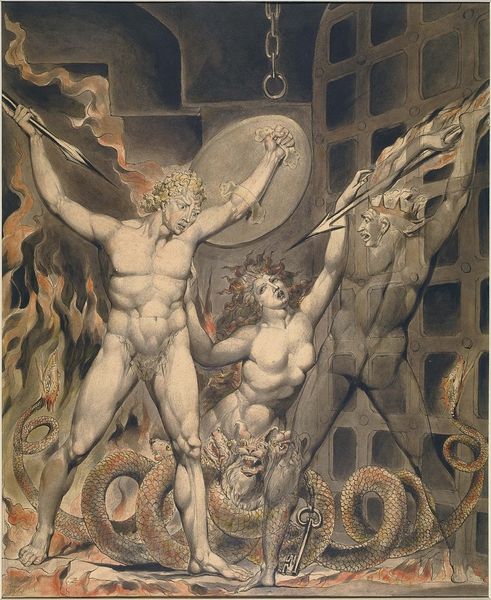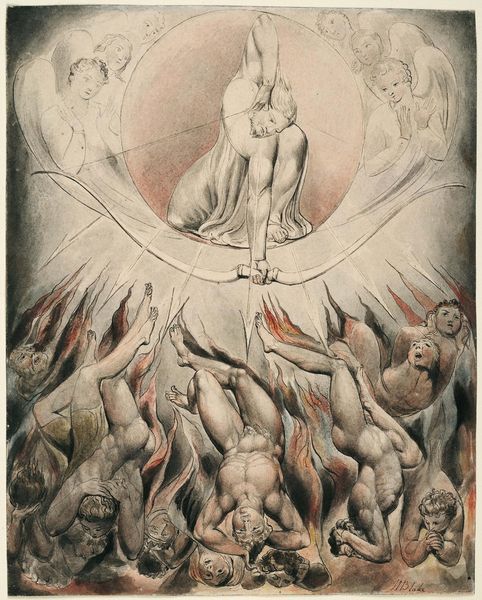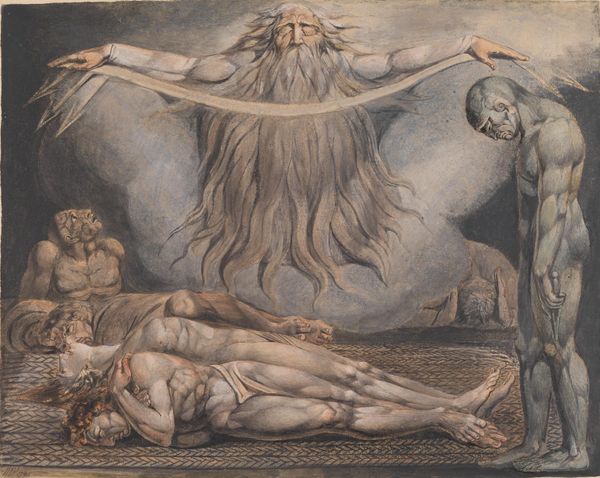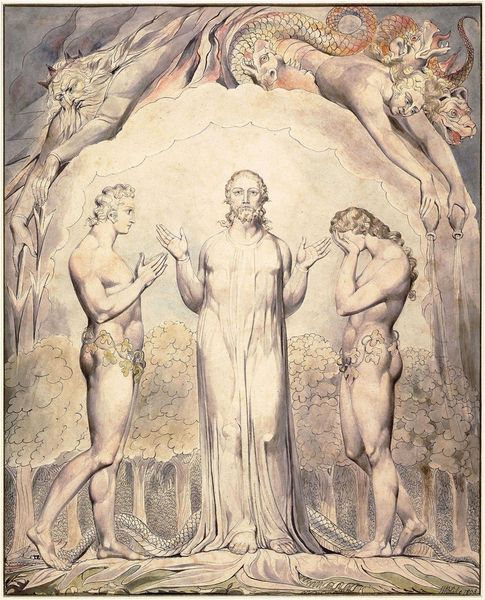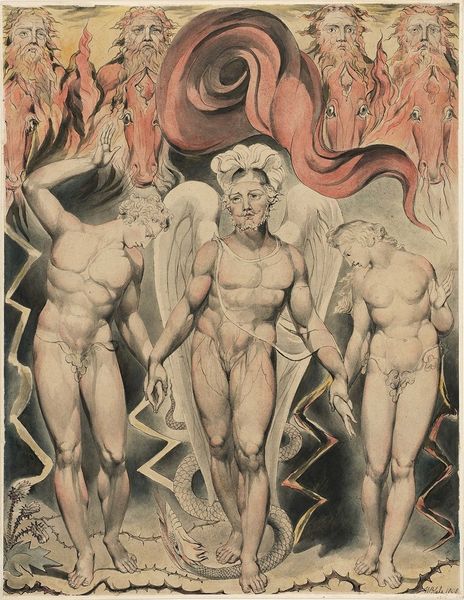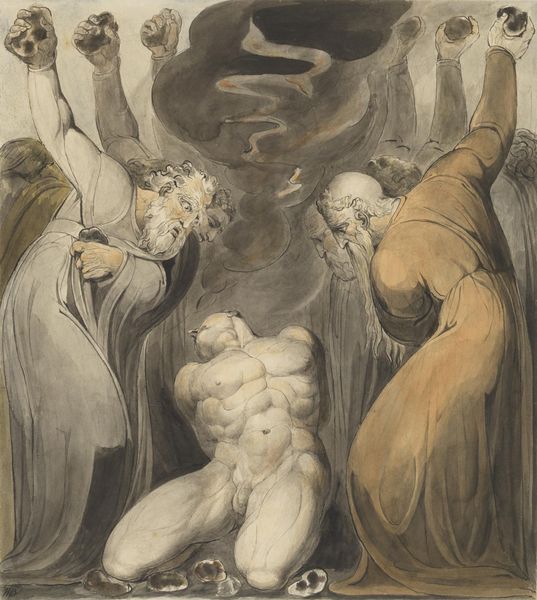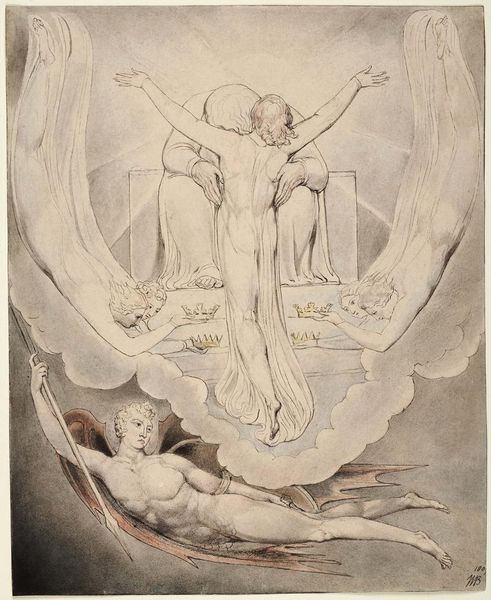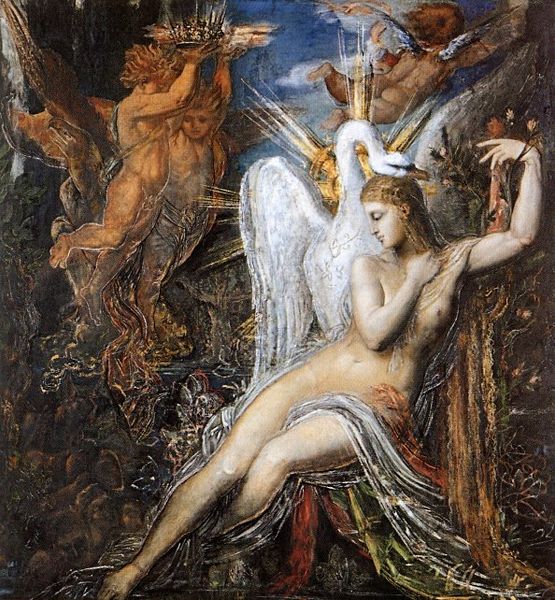
Dimensions: 393 x 496 cm
Copyright: Public domain
Curator: This is William Blake’s “Christ as the Redeemer of Man,” an ink and watercolor drawing from 1808. What are your initial impressions? Editor: Well, the spiraling figures immediately suggest a theatrical ascension. There's a lot of emotion in these poses—a raw sense of yearning and hope that is quite overwhelming. Curator: Blake’s artistic output, even biblically inspired work like this, needs to be considered alongside the era’s social and political ferment. Blake lived in revolutionary times and saw art as a tool for social transformation. Editor: Absolutely. And that context illuminates the figures' exaggerated, almost anguished gestures. The elongated bodies and the upward surge—it's a rejection of earthly constraint, wouldn't you say? Almost a bodily invocation. Curator: One can see Blake pulling from the Neoclassical style, but distorting its emphasis on idealized forms into something much more expressive. He saw academic art as stifling true vision. The choice of watercolor lends an ethereal quality. Editor: Which only emphasizes the symbolism at play: the recumbent angel pointing upwards, the weeping figures. Consider, too, Blake’s deep engagement with religion as a system to either liberate or constrain. This work feels like a liberation—Christ bursting free, even from the expectations placed on Him. Curator: Blake certainly pushed boundaries. The drawing would've challenged conventional religious art, which, during this period, often served as an arm of the establishment. He instead visualized faith as an intensely personal and rebellious act. Editor: What's powerful is how this depiction of Christ transcends traditional, often whitewashed, representations, suggesting a more human, more emotionally resonant redeemer figure. The political implications are hard to ignore. It seems that Blake wanted a faith rooted in real people. Curator: The radical message embedded in Blake’s imagery offers viewers opportunities to question not only conventional religious interpretation, but the prevailing societal values, which art institutions, particularly in London, propped up. Editor: I’m left with a sense of wonder at Blake's ability to capture such intense, contradictory emotions. There is fragility as well as force, questioning along with pure exaltation. Curator: I think Blake invites viewers to interrogate power structures and how institutional religion relates to everyday faith, as he understood the visual to be the vehicle for this exploration.
Comments
No comments
Be the first to comment and join the conversation on the ultimate creative platform.
